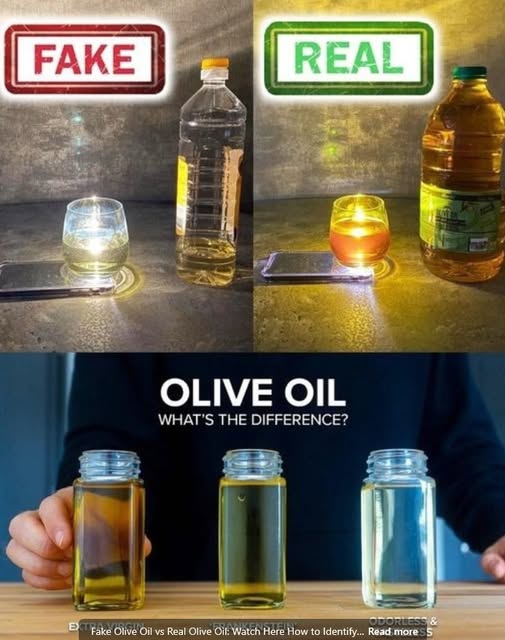Look for “extra virgin” on the front.
Avoid oils labeled “light,” “pure,” or “blend.”
Check the harvest date — fresher is better (within 12–18 months).
Country of origin: If multiple countries are listed, it may be a blend. Try to choose single-origin oils.
5. Price & Packaging:
Real EVOO is rarely cheap.
It should come in a dark glass bottle or tin, not clear plastic (to protect from light).
Avoid bargain-bin olive oils — quality comes at a cost.
Watch This Test in Action
Want to see how fake olive oil compares to real olive oil on camera? Watch this short and informative demo [insert your video link here] where side-by-side testing reveals the truth — from color and texture to scent and taste.
Bonus Tips
Store Properly: Keep olive oil in a cool, dark place — not near the stove!
Use It Fresh: Olive oil doesn’t age like wine — use it within 6–12 months of opening.
Trusted Brands: Look for producers who care about transparency. Local, organic, and small-batch producers often offer higher quality.
Final Thoughts
Spotting real olive oil is all about being an informed consumer. Trust your senses, check the label carefully, and don’t fall for misleading terms. When in doubt, go for brands with transparency, certifications, and a taste that speaks for itself.
Would you like me to create a short visual checklist or a printable one-page version of this guide?



Yo Make również polubił
Onion and Cumin Beef Stir-Fry: A Savory and Flavorful Dish
Faszerowana papryka do tacos
Pyszne danie z kiełbasą i fasolą w wolnowarze: proste i smaczne rozwiązanie na rodzinny obiad
Natural BOMB for Cleansing the Liver and Blood Vessels: 2 Powerful Ingredients